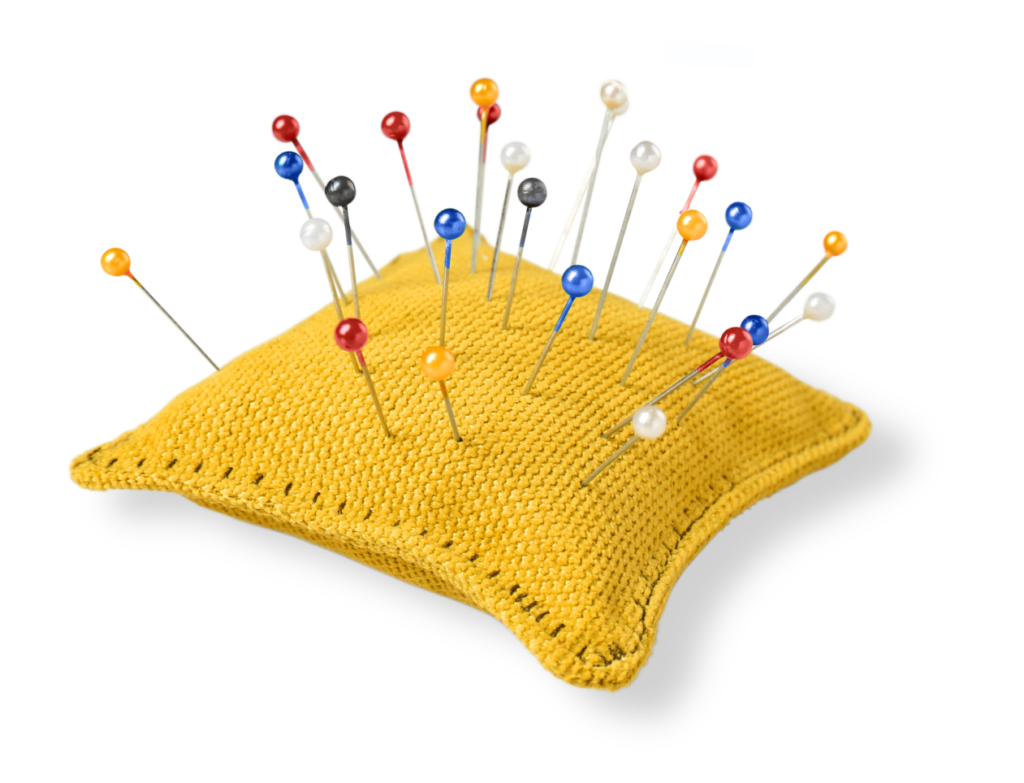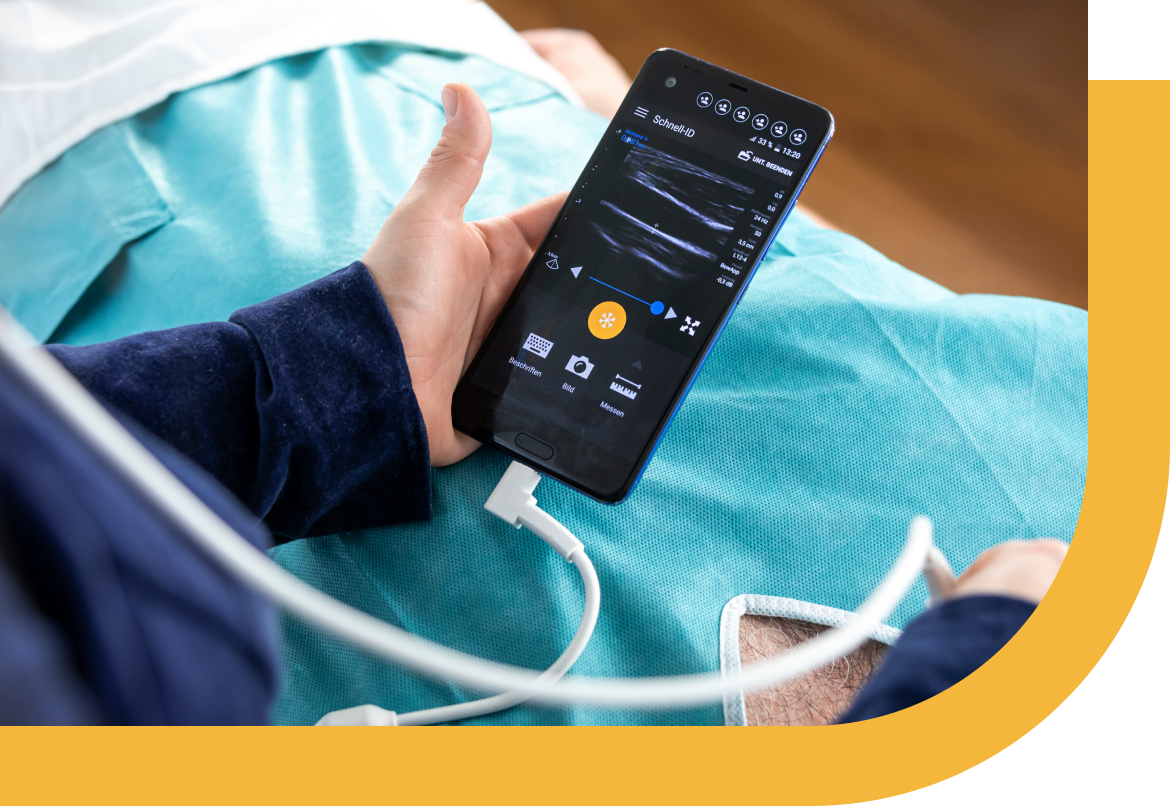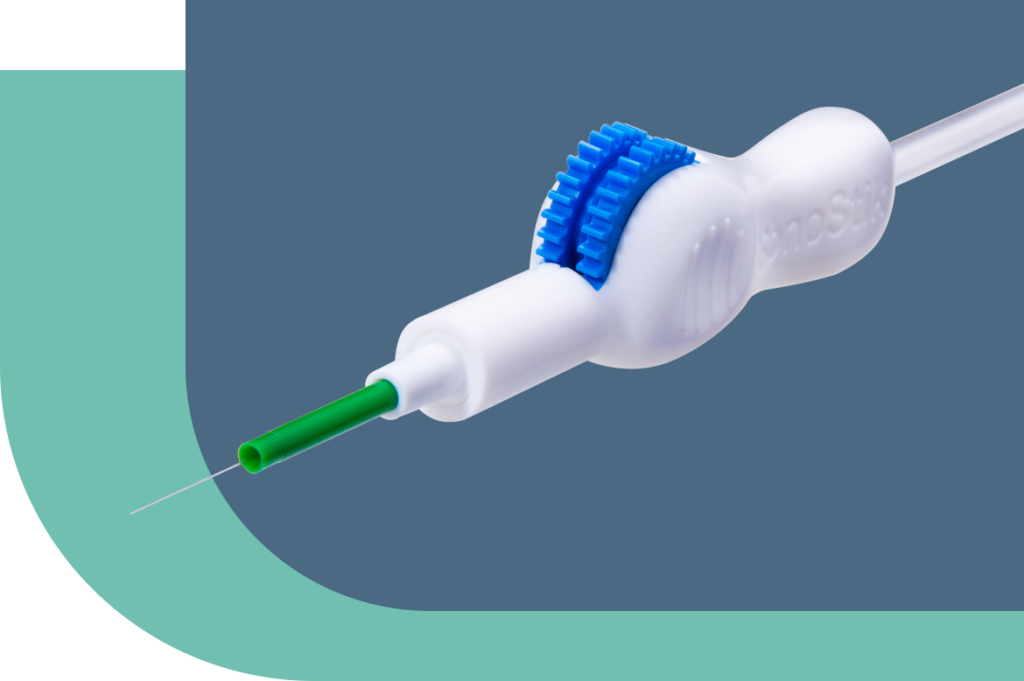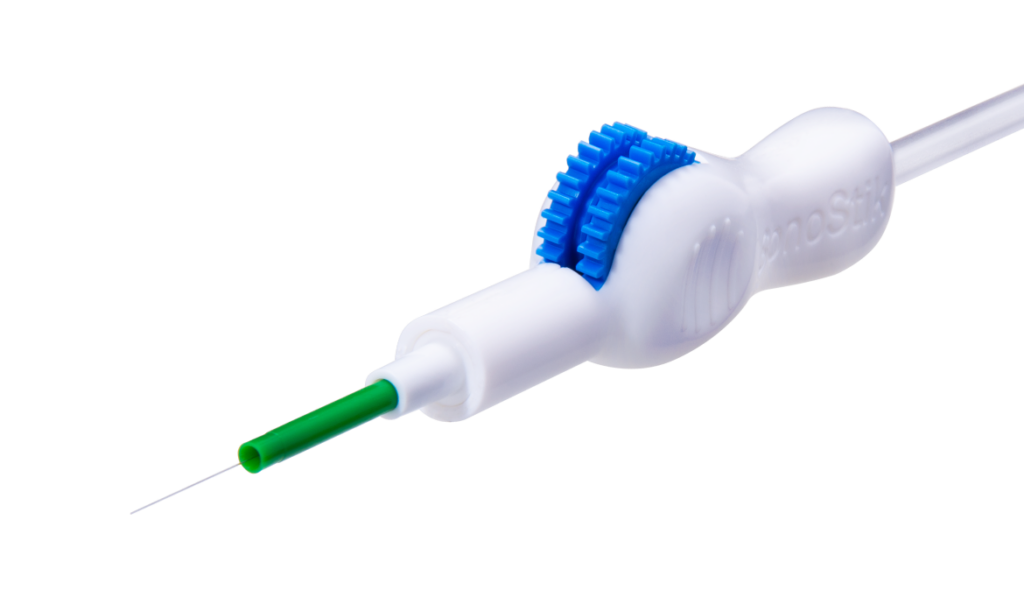Simplifying
venous
venous access
access
Challenging peripheral IV (PIV) procedures are a persistent problem for hospitals. SonoStik® is here to help change that.

Challenging peripheral IV (PIV) procedures are a persistent problem for hospitals. SonoStik® is here to help change that.

Placing an intravenous catheter is often one of the essential first steps in a patient’s care. 60-90% of hospitalized patients receive a peripheral IV — and in most cases, placing it takes more than one attempt.1-3
When getting the stick takes multiple, painful, time-consuming tries, it can also be the start of something else: a series of clinical challenges that put both patient outcomes and operational performance at risk.

Multi-attempt procedures disrupt clinical workflows and slow potentially life-saving interventions.
Every attempt takes up more hospital resources and drives up the cost of the patient’s outcome.
Falling back to a central line can increase the potential for complications and patient mortality.
Every extra stick puts the patient in more pain, priming them to deliver poor satisfaction scores.
are placed in hospitalized patients annually.8
needed for successful IV placement in DIVA patients .9
are dissatisfied with the experience.10

To address their DIVA challenges, many hospital teams are turning to ultrasound-guided PIV procedures — an approach that has set a new standard for reducing failure rates.4-6
Thanks to a new generation of portable, hand-held ultrasound devices, more and more clinicians are integrating this technology into their bedside procedures. But without a single-handed vascular access device, bringing ultrasound guidance to PIV procedures has remained a challenge for many clinical teams — until now.
The SonoStik IV Guidewire introducer is the device clinicians and DIVA patients have been waiting for. It puts everything needed for a successful PIV procedure in just one hand — freeing the other for a portable ultrasound.7
This innovative design makes SonoStik an optimal choice for teams that want to achieve gold-standard success rates with their peripheral access procedures. It makes quick, comfortable, and cost-efficient PIV placements possible for even the most challenging procedure.


Right-first-time placement that saves precious time — and potentially a life.
Easy, single-handed management of introducer, catheter, and guidewire.
Quick, first-try sticks that start the patient’s stay with a positive, satisfying experience.
One-person PIV procedures that free up clinical resources to deliver more care.
Our innovative device can be a valuable resource for clinicians and care pathways in multiple hospital departments. See how it can benefit yours.
Emergency care
Perioperative care
Critical care/ICU

When a patient arrives at the emergency department, struggling to place a peripheral IV can cause life-threatening delays.
In those critical moments, SonoStik makes it easier than ever to get that urgently needed stick — even when you don’t have time to get the portable ultrasound.

OR time is too valuable to waste with multiple attempts to place a difficult peripheral IV. Every delay costs your patient precious time with the surgical team.
SonoStik turns a frequent pre-op challenge into a consistently efficient step in your perioperative workflow. Find out how it can help keep your prep plan flowing smoothly.

All too often, critically ill patients arrive at the ICU with a central line – and an elevated risk of infection. Replacing that catheter with a peripheral IV is often one of your first priorities.
With SonoStik, that transition is quicker, easier, and more efficient than ever, even in patients with compromised vasculature. Find out how it can help you protect your most at-risk patients.
References: 1. Platt V, Osenkarski S. Improving Vascular Access Outcomes and Enhancing Practice. J Infus Nurs. 2018 Nov/Dec;41(6):375-382. doi: 10.1097/NAN.0000000000000304. 2. Helm RE, Klausner JD, Klemperer JD, Flint LM, Huang E. Accepted but unacceptable: peripheral IV catheter failure. J Infus Nurs. 2015 May-Jun;38(3):189-203. doi: 10.1097/NAN.0000000000000100. 4. Gottlieb M, Sundaram T, Holladay D, Nakitende D. Ultrasound-Guided Peripheral Intravenous Line Placement: A Narrative Review of Evidence-based Best Practices. West J Emerg Med. 2017 Oct;18(6):1047-1054. doi: 10.5811/westjem.2017.7.34610. 5. Au AK, Rotte MJ, Grzybowski RJ, Ku BS, Fields JM. Decrease in central venous catheter placement due to use of ultrasound guidance for peripheral intravenous catheters. Am J Emerg Med. 2012 Nov;30(9):1950-4. doi: 10.1016/j.ajem.2012.04.016. 6. Duran-Gehring, P, Bryant, L, et al. Ultrasound-Guided Peripheral Intravenous Catheter Training Results in Physician-Level Success for Emergency Department Technicians. J Ultrasound in Med. 2016;35:2343-2352. https://doi.org/10.7863/ultra.15.11059. 7. SonoStik IV Guidewire Introducer Instructions for Use (IFU). 8. Marsh N, Webster J, Larsen E, Genzel J, Cooke M, Mihala G, Cadigan S, Rickard CM. Expert versus generalist inserters for peripheral intravenous catheter insertion: a pilot randomised controlled trial. Trials. 2018 Oct 17;19(1):564. doi: 10.1186/s13063-018-2946-3. PMID: 30333063; PMCID: PMC6192347. 9. Steere L. (2020, October 8). The Right Approach for the Right Result. https://www.psqh.com/analysis/the-right-approach-for-the-right-result/ 10. Pandurangadu AV, Tucker J, Bagan M, Bahl A (2016) Patient Satisfaction with Nurse Placed Ultrasound Guided Peripheral IV. Emerg Med (Los Angel) 6: 325. doi:10.4172/2165-7548.1000325